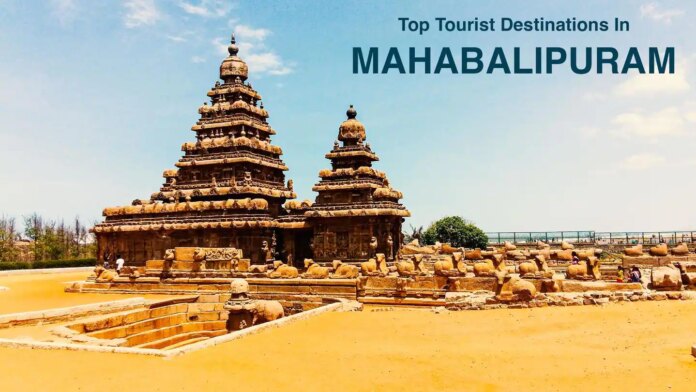Top 5 tourist destinations in Mahabalipuram
Apr 07, 2022, 11:19 am
Mahabalipuram is a treasure trove of history. (Photo credit: Wikimedia Commons)
Mahabalipuram in Tamil Nadu is a backpacker’s delight.
The port city is known for the 7th- and 8th-century group of royal monuments that were named a UNESCO World Heritage Site.
One of the most visited sites in India, Mahabalipuram was called Thirukadalmallai in ancient times.
If you’re traveling to Tamil Nadu, do not miss this place brimming with history and ancient architecture.
As one of the Group of Monuments, the Shore Temple got classified as a UNESCO World Heritage Site in 1984.
One of the oldest temples of southern India, the site is believed to have been called Seven Pagodas by Marco Polo and other European merchants.
It is possible that the temple was a landmark for the seafarers and appeared like a pagoda.
The Tiger Cave is a rock-cut temple complex that derived its name from the carvings of tiger heads at the mouth of one of the caves here.
It is believed that the Pallavas in the 8th century AD constructed the rock-cut temple.
At present, the temple is maintained by the Archaeological Survey of India (ASI).
This complex houses many temples at one stop.
A massive 250-ton boulder stands on a slope. Krishna’s Butterball is also known as “Stone of Sky God.”
Said to be standing the same way for 1,200 years, no one knows how the boulder defies gravity.
As part of the Group of Monuments, a UNESCO World Heritage Site, it is listed as a protected national monument by the Archaeological Survey of India.
Panch Rathas (Pandava Rathas)
Five temples were built like chariots back in the 8th century in this monument complex.
The structures are carved out of pink granite and named after Draupadi and the Pandavas.
Each monument was carved over a single monolith of granite.
Although often called temples, the structures weren’t consecrated.
With the death of Narasimhavarman I, during whose reign the carvings started, the structure remained unfinished.
Also known as Descent of the Ganges, it is a giant open rock relief carved out of two monolith boulders.
On top of this used to be a large collecting pool.
The monoliths depict the story of the descent of River Ganga from the heavens led by Bhagiratha.
Another interpretation is of Arjuna’s penance after a fight with Lord Shiva who was in disguise.










